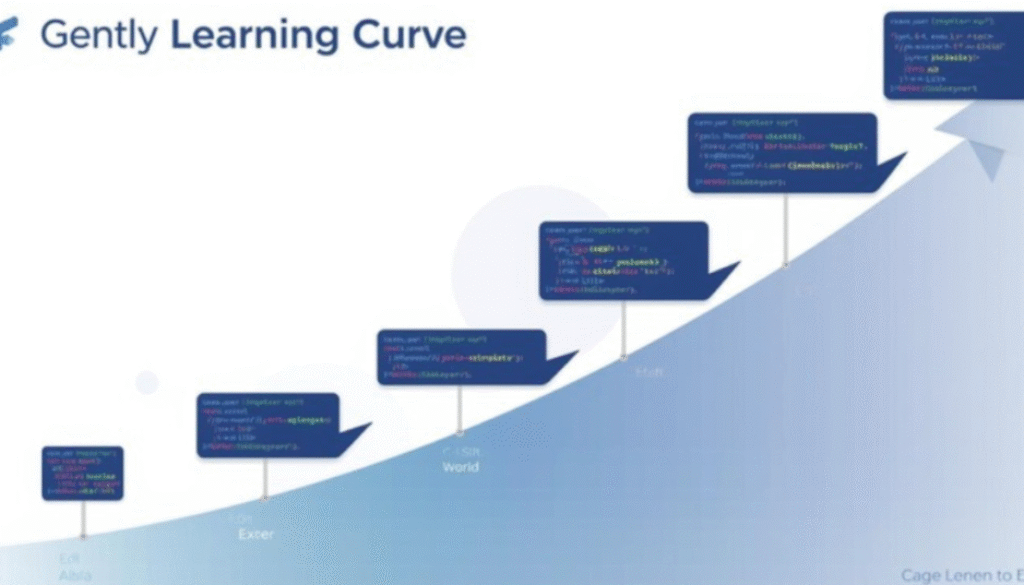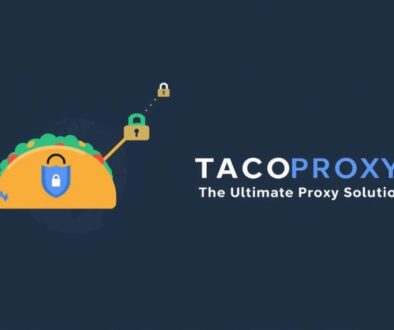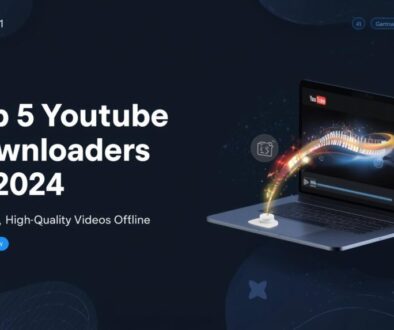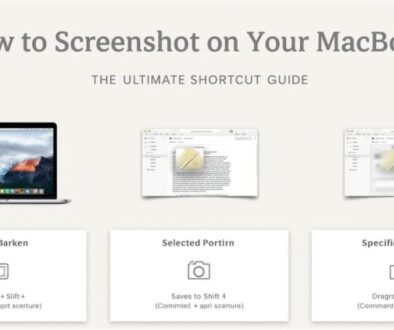The Easiest Programming Language to Learn in 2025: A Beginner’s Guide
Introduction: Why Learn to Code in 2025?
The digital transformation is accelerating. From artificial intelligence and automation to web development and data science, the demand for programming skills has never been higher. Whether you’re aiming for a career change, seeking to boost your productivity, or simply exploring a new hobby, learning to code is one of the most valuable investments you can make in 2025.
But for a complete beginner, the biggest hurdle is often the first step: which programming language should I learn? With hundreds of languages available, the choice can be paralyzing. The key is to start with a language that is known for its gentle learning curve, clear syntax, and immediate feedback. This approach builds confidence and foundational knowledge that makes learning subsequent languages much easier.
So, what is the easiest programming language to learn in 2025? Based on readability, community support, learning resources, and real-world applicability, one language stands out above the rest.
The Winner: Python – The Uncontested Champion for Beginners
For the fifth year in a row, Python retains its crown as the easiest and most recommended programming language for beginners. Its design philosophy emphasizes code readability and simplicity, making it feel almost like writing in English.
Why Python is So Easy to Learn
- Clean and Readable Syntax: Python uses indentation (whitespace) to define code blocks, forcing a clean and consistent look. Unlike other languages that rely on curly braces {} or semicolons ;, Python’s syntax is intuitive. For example, a simple print(“Hello, World!”) is all you need to see your first output.
- Gentle Learning Curve: Python allows you to grasp fundamental programming concepts—like variables, loops, and functions—without getting bogged down by complex syntax rules. You can focus on how to think like a programmer rather than memorizing obscure punctuation.
- Versatility and Immediate Gratification: Python is a general-purpose language. You can use it for almost anything:
- Web Development: With frameworks like Django and Flask.
- Data Science & Machine Learning: Using powerful libraries like NumPy, Pandas, and Scikit-learn.
- Automation and Scripting: Automate repetitive tasks on your computer.
- Game Development: With libraries like Pygame.
This versatility means you can quickly build tangible projects, from a simple calculator to a web scraper, which keeps motivation high.
- Massive Community and Learning Resources: As one of the world’s most popular languages, Python has an enormous, supportive community. If you have a question, it’s almost certainly been answered on platforms like Stack Overflow. Furthermore, there is an abundance of free tutorials, interactive courses (e.g., Codecademy, freeCodeCamp), and YouTube channels dedicated to teaching Python from scratch.
Who is Python For?
- Absolute beginners with no prior experience.
- Students interested in data science, AI, or academic research.
- Professionals in non-technical fields (like marketing or finance) who want to automate tasks and analyze data.
Runner-Ups: Other Easy-to-Learn Languages for 2025
While Python is our top pick, the “easiest” language can also depend on your specific goals. Here are other excellent, beginner-friendly contenders.
1. JavaScript: The Language of the Web
If your primary interest is building interactive websites, JavaScript is arguably the most practical first language.
- Why it’s easy: It’s built into every web browser, meaning you can start coding with just a text editor and a browser—no complex setup required. The instant visual feedback (seeing your code change a webpage in real-time) is incredibly rewarding for beginners.
- Best for: Aspiring front-end, back-end (with Node.js), or full-stack web developers.
- Consideration: JavaScript can have some quirky behaviors that might confuse beginners initially, but modern JavaScript (ES6+) has become much more consistent.
2. HTML/CSS: The Gateway to Web Development
While not “programming languages” in the strictest sense (HTML is a markup language and CSS is a style sheet language), they are the fundamental building blocks of the web.
- Why they’re easy: Their syntax is straightforward and declarative. You describe what you want to see (e.g., <h1>This is a heading</h1> or color: blue;) rather than writing complex logic. Learning them provides an immediate sense of accomplishment as you see visual results instantly.
- Best for: Anyone interested in web design, UX/UI, or content creation. They are a non-negotiable first step for web developers.
- Consideration: To create functional web applications, you will need to learn JavaScript after mastering HTML and CSS.
3. Scratch: The Best for Young Learners (and Absolute Beginners)
Developed by MIT, Scratch is a visual programming language where you drag and drop code blocks instead of typing text.
- Why it’s easy: It completely eliminates syntax errors. This allows learners to focus entirely on the core concepts of programming logic, sequences, and loops in a fun, game-like environment.
- Best for: Children, educators, and adults who are intimidated by traditional coding syntax. It’s a fantastic tool to demystify programming.
- Consideration: It’s not used in professional software development, so it’s a starting point before transitioning to a text-based language like Python.
How to Choose the Right Language for YOU
The “easiest” language is the one that aligns with your “why.” Ask yourself these questions:
- What is my goal?
- “I want to get a job in tech quickly.” -> Focus on JavaScript for web development or Python for data roles.
- “I want to build websites or web apps.” -> Start with HTML/CSS, then move to JavaScript.
- “I’m interested in data, AI, or scientific computing.” -> Python is the undisputed choice.
- “I just want to see if I like coding.” -> Python or Scratch are perfect low-pressure starting points.
- What kind of projects excite me?
Motivation is key. If you’re passionate about creating beautiful websites, starting with JavaScript will feel more engaging. If you’re fascinated by data analysis, Python will be more inspiring.
Getting Started: Your First Steps to Learning to Code
Once you’ve chosen your language, follow these steps to set yourself up for success:
- Find a High-Quality Beginner Course: Don’t just jump in randomly. Structured courses on platforms like Coursera, Udemy, or freeCodeCamp provide a clear learning path.
- Practice Consistently: Coding is a skill, like learning a musical instrument. Practice for 30 minutes every day is far more effective than cramming for hours once a week.
- Build Projects, No Matter How Small: After learning the basics, immediately start building. Your first project could be a simple number-guessing game, a personal portfolio website, or an automated script to organize your files. This is where real learning happens.
- Don’t Be Afraid to Make Mistakes: Errors are an integral part of programming. Every developer, regardless of experience, spends a significant amount of time debugging. Learning to read error messages and troubleshoot is a core skill.
- Join a Community: Engage with forums like Stack Overflow, Reddit (e.g., r/learnprogramming), or local meetups. Learning with others makes the journey less daunting.
Conclusion: Start Your Journey with Python in 2025
In 2025, the landscape for beginner programmers is more accessible than ever. While excellent options like JavaScript and HTML/CSS exist for specific paths, Python remains the easiest and most versatile programming language for a beginner to learn. Its simplicity, power, and supportive community provide the ideal environment to build a strong programming foundation.
The most important step is to start. Choose a language, find a course, and write your first line of code today. The skills you build will open doors to new opportunities and ways of thinking, empowering you to shape the digital world of tomorrow.
FAQs About the Easiest Programming Language to Learn in 2025
1. Is Python really the easiest language for someone with no experience?
Yes, absolutely. Python was designed with readability in mind. Its syntax is clean and often resembles plain English, which allows complete beginners to focus on understanding core programming concepts like logic and problem-solving instead of getting stuck on complex rules and symbols.
2. I want to get a job as quickly as possible. Should I still learn Python first?
While Python can lead to high-demand jobs in data science and backend development, if your primary goal is to enter the job market as quickly as possible in web development, you might consider starting with HTML/CSS and then JavaScript. The path to becoming a front-end developer can be very direct. However, Python is an excellent choice for data-focused roles.
3. How long does it take to learn the basics of Python?
With consistent practice (e.g., 30-60 minutes per day), you can grasp the fundamental concepts—variables, data types, loops, conditional statements, and basic functions—within a few weeks. This is enough to start building simple projects like a number-guessing game or a basic calculator.
4. What about languages like Java or C++ for beginners?
Languages like Java and C++ are powerful but are generally not recommended as a first language. They have steeper learning curves because they require beginners to understand more complex concepts like memory management and explicit type declarations from the very start. It’s better to learn these after you have a solid programming foundation with a language like Python.
5. Can I learn Python on my own for free?
Yes, without a doubt. There is an abundance of high-quality, free resources available. Websites like freeCodeCamp, Codecademy, and the official Python documentation offer excellent tutorials. YouTube also has countless beginner-friendly Python courses. The community support is massive, so help is always available.
6. Is Python only good for beginners, or is it used in real-world applications?
Python is a powerhouse in the professional world. It is extensively used by major companies like Google, Netflix, and Spotify for a wide range of applications, including:
- Backend Web Development (Instagram, Pinterest)
- Data Science and Machine Learning (Tesla, NASA)
- Automation and Scripting
- Scientific and Numeric Computing
7. I’ve heard JavaScript is easier because it’s in the browser. Is that true?
JavaScript has the advantage of immediate visual feedback, which is highly motivating. You can see your code come to life instantly in a web browser. However, JavaScript has some quirks and complexities that can confuse beginners. Python’s consistency often makes it a gentler introduction to fundamental programming logic.
8. What is the biggest mistake beginners make when choosing a language?
The biggest mistake is “paralysis by analysis”—spending too much time researching the “perfect” language instead of just starting. The second biggest mistake is choosing a language that is too complex for a first-timer (like C++ or Assembly). The best strategy is to pick a beginner-friendly language like Python and commit to learning it consistently.
9. After learning Python, what should I learn next?
Your next step depends on your interests:
- For Web Development: Learn HTML, CSS, and JavaScript to build websites.
- For Data Science: Dive deeper into Python libraries like Pandas, NumPy, and Matplotlib.
- For Mobile App Development: Explore Kotlin for Android or Swift for iOS.
The foundational skills you learn in Python will make picking up any second language much easier.
10. Are there any downsides to starting with Python?
The main “downside” is that Python handles a lot of complexity for you (like memory management). When transitioning to a lower-level language like C++, you may need to learn these underlying concepts later. However, this is a minor trade-off compared to the benefit of building confidence and practical skills quickly as a beginner.



